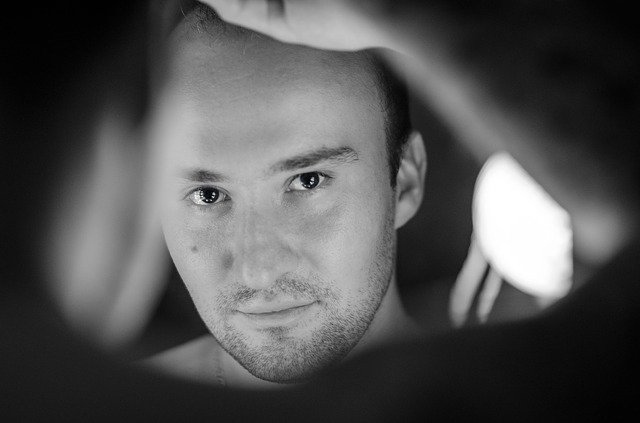We all are very aware of the difference in Men’s and Women’s skin but little do we know the exact differences. Women take care of their skin in many ways but men tend to take care of their skin less often. Here we learn what are the differences between men’s and women’s skin and how men should take care of their skin and treat it accordingly.
Hormones affect the texture of the skin
The sebum gland production of the skin is regulated by the female (estrogens) and the male (androgens) sex hormones. The top layer of skin remains supple due to the fatty sebum and protects against germs. While androgens stimulate sebum production, estrogens tend to inhibit it. For this reason, men’s skin tends to have a large-pored and oily texture. Due to the higher sebum and sweat production, the pH value of the skin in men is lower. The hormonal balance is also responsible for the fact that the skin of women ages faster than men’s skin.
What makes men’s skin more robust?
The men’s skin is 0.2 millimeters thicker than women’s skin because it contains a higher proportion of collagen, a skin-tightening protein that works as a kind of support corset for the cells. Women’s skin feels more delicate. In addition, the connective tissue fibers that support the cells run parallel in women but networked in men. They fulfill a much better support function and give the men’s skin additional stability and elasticity.
The protective acid mantle of the men’s skin is also more robust since it has a more stable and intensive circulation. Men’s skin is less sensitive to environmental pollution such as sunshine or dry air because its epidermis contains more melanin. This gives men a darker complexion, which makes their skin even less sensitive to UV rays.
Because of this, the skin of women becomes thinner after menopause and slackens faster than that of men. Cellulite is therefore not a problem for men. However, wrinkling is much more pronounced in old age than in women.
Where are the weak spots in men’s skin?
The more robust men’s skin not only has advantages – it has more and larger sebaceous glands, which form about 30 percent more skin fat than a women’s skin. The male hormone testosterone is responsible for this. For this reason, men’s skin is usually oily and porous, which means that men’s skin is more prone to acne.
Why does men’s skin develop deeper wrinkles?
Up to the age of thirty, men’s skin is firmer than that of women. Men are almost wrinkle-free up to this age, while women show the first signs around the eyes at the age of 20. But from the age of 35, men’s skin ages faster because the production of new skin cells is slower and the elasticity of the connective tissue also decreases. The ability to retain moisture is rapidly disappearing.
Proper skincare for men’s skin
Whereas in the past water and soap were sufficient for men for body care, nowadays many use care products. In order not to strain the skin prone to greasiness and to clog the pores, men should mainly use moisturizing care for skincare. At cold temperatures, low-fat creams should be used. A sunscreen with a high sun protection factor should be applied because men’s skin loses elasticity in old age. If you have oily skin then you can follow some skin care tips that women follow. Read our article about the 6 Best Skincare Tips for Oily skin.
What role does body hair play in men?
Typical for men is the strong body hair, especially on the face. There are 5,000 to 30,000 hairs in the beard zone alone. Influenced by the male hormone androgen, body and beard hair in men also become significantly thicker than female hair. A whisker grows a maximum of 0.4 mm per day. The hormone testosterone is not only responsible for the strong sebum production, but also for the strong hair in men.
Problem area: Beard
With daily shaving, men expose their skin to severe stress, which primarily affects the protective acid mantle. In addition, shaving causes minor skin injuries and allows them to dry out heavily. It is not uncommon for reddening or irritation of the men’s skin, the so-called razor burn. The affected areas burn and itch and small reddish pimples develop that only heal after days.
If the male skin is rough, the hair grows under the skin and forms small papules, which leads to local swelling of the skin. If these are cut open during shaving, germs can penetrate the hair follicle and cause inflammation. Men with strong, curly hair in particular often suffer from this type of inflammation.
Tips for the perfect beard shave
Before you start shaving, dampen the face with warm water so that the shaving foam can work and soften the skin and beard.
Massage the shaving cream gently to stimulate blood flow to the dermis.
To avoid skin irritation, the razor blade should never be blunt and should always be guided in the direction of hair growth.
After shaving, the skin should be moisturized.
Dry shaving is good for dehydrated or acne-prone skin. The risk of injury is reduced if the skin does not come into direct contact with the blade.
In today’s world, the ongoing trend is not just about women being beautiful but it is equally important for the men to look good as well. Don’t shy away from buying skincare products or visiting a salon to get a facial. After all, men should look beautiful as well. In 2020, sayings such as, a man shouldn’t shed a tear or use beauty product ends as a myth. Go experimental!


Comments are closed.